Torres del Paine National Park covers 1,814 km² of Patagonian land. This paradise on Earth contains colorful forests and meadows, nourishing rivers and lakes, and mountains and hills that crown the horizon in all directions. As you probably know, Torres del Paine Biosphere Reserve is the perfect setting for diverse and unique fauna. However, there are a few animals you might not have heard of that also make their home here. Sighting one of the following species will be a precious memory of your trip to Las Torres Patagonia.
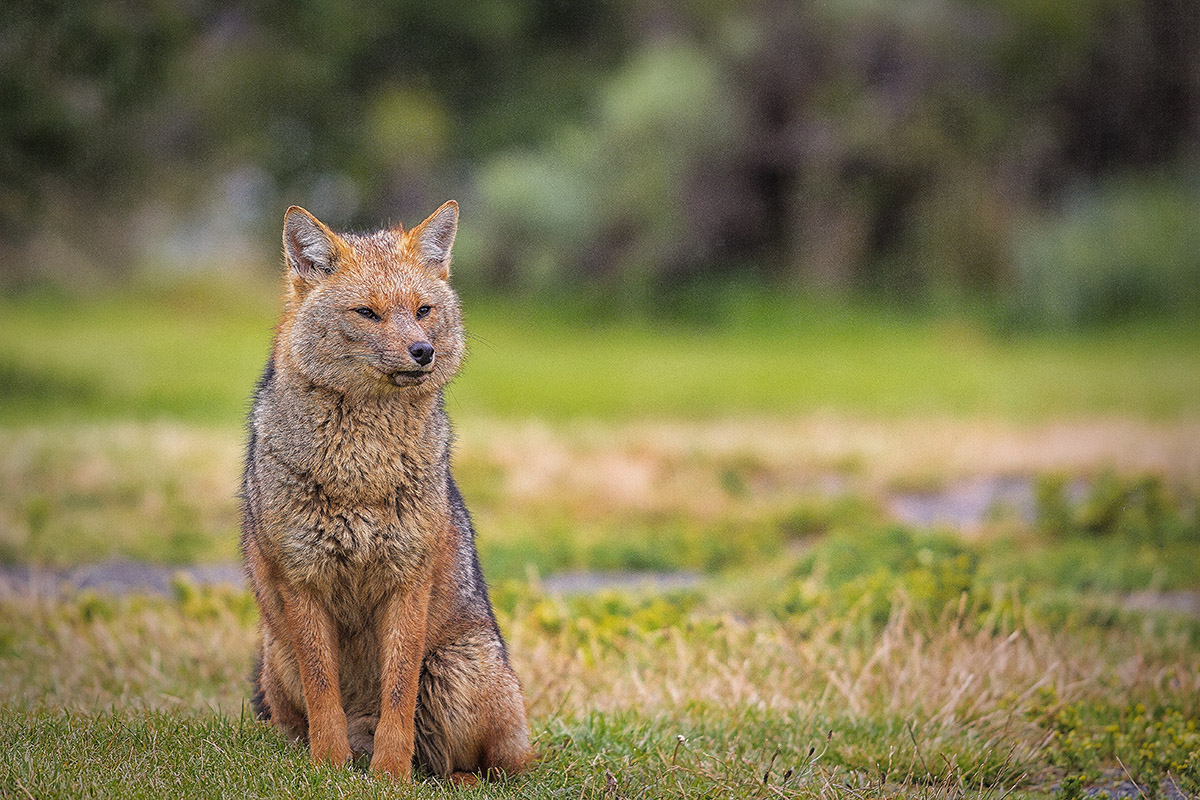
Andean Fox
Chile is home to three species of foxes, the Culpeo being the largest of them, with a length that reaches approximately one and a half meters, including its tail. Characterized as an opportunistic and solitary predator, it feeds mainly on small mammals and other animals it finds, such as birds, reptiles, and rodents. The Culpeo fox is a highly solitary animal and only seeks company during its breeding period. During this stage, the male and the female come together to raise their young, accompany each other during the gestation period, and share the responsibility of taking care of the burrow where the pups will live. Once the little foxes are two months old, their parents teach them how to hunt until they are about a year old. After this period, the family separates and returns to a solitary life.
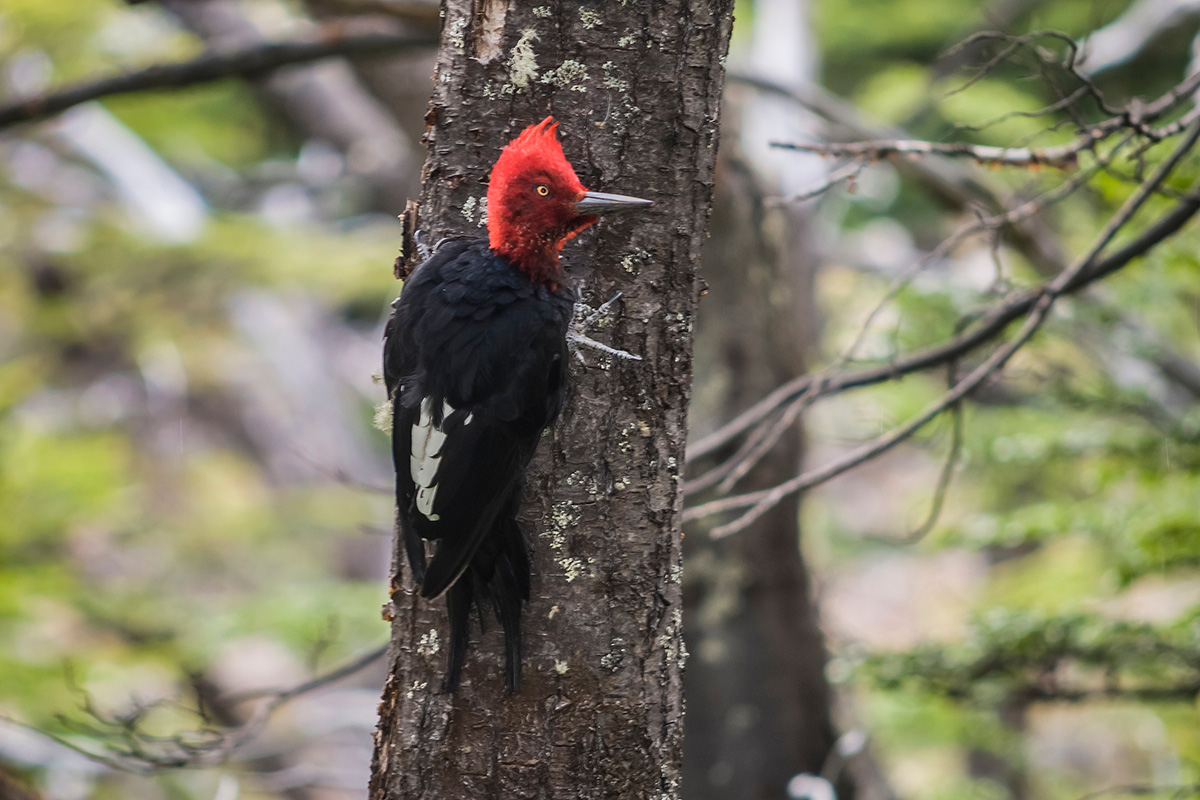
Magellanic Woodpecker
The Magellanic Woodpecker appears in the Patagonia region in two variants, depending on gender. You can distinguish the male with its vibrant redhead, jet-black body, and feathers that shine in the sunlight. The female has an entirely dark body, with only a touch of scarlet on the edge of her beak.
The woodpecker plays a crucial role in the forests of Patagonia, since its diet is based mainly on wood-eating insects. Their presence contributes to regulating the invertebrate population, controlling their spread, and preventing them from becoming forest pests. This bird has evolved so that pecking at wood does not cause it harm, with a strong and straight beak adapted for this task. If you hear the distinctive knocks on the branches of the trees, it means that the guardian of the forests is doing his job of protecting against pests.
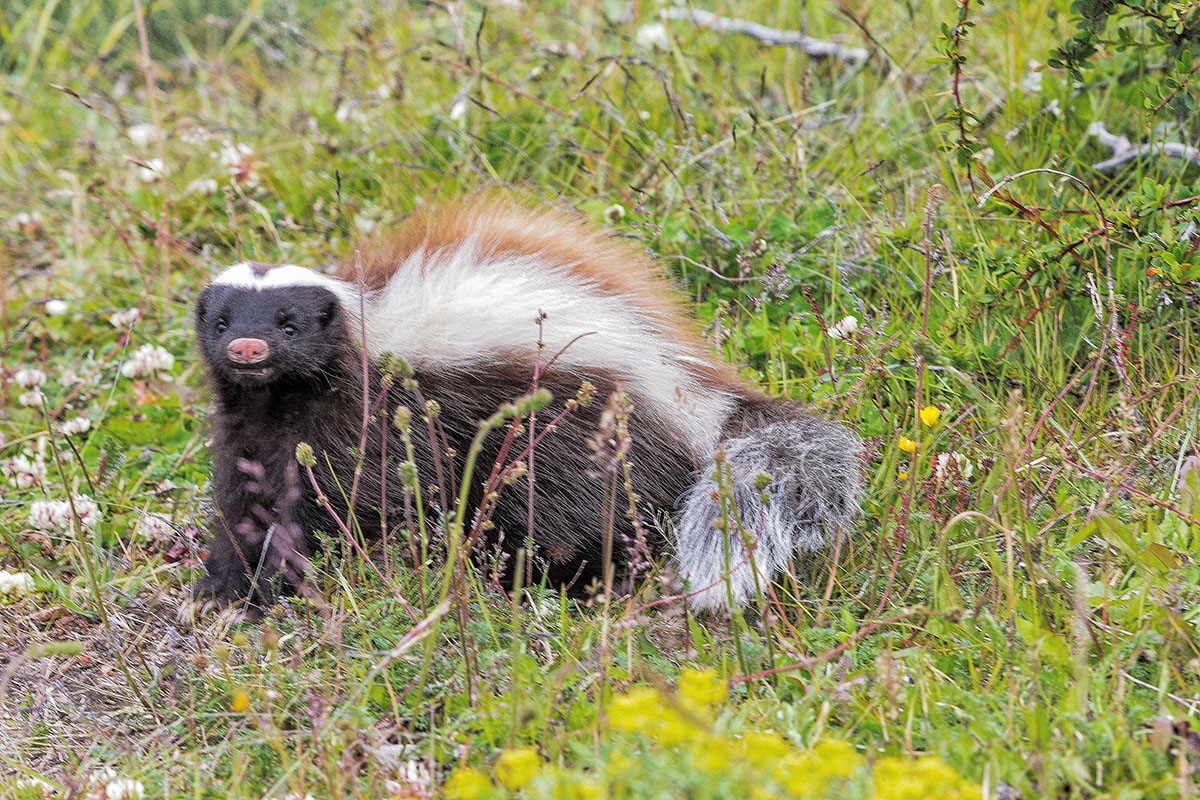
Patagonian Chingue
Although it is often confused with the common skunk, they are not the same animal but have many similar characteristics.
The Chingue is a rather solitary animal that usually lives in underground burrows and digs itself with its small but powerful claws. Its diet is based entirely on insects, vegetables, and eggs that it steals from other animals. Like the skunk, the Chingue has anal glands that excrete a bad smell. This defense mechanism produces irritation in its enemies’ eyes and the fetid odor can permeate skin and clothing. Be careful with these animals when driving through Patagonia since they usually cross the road without fear and often get injured or killed by cars.
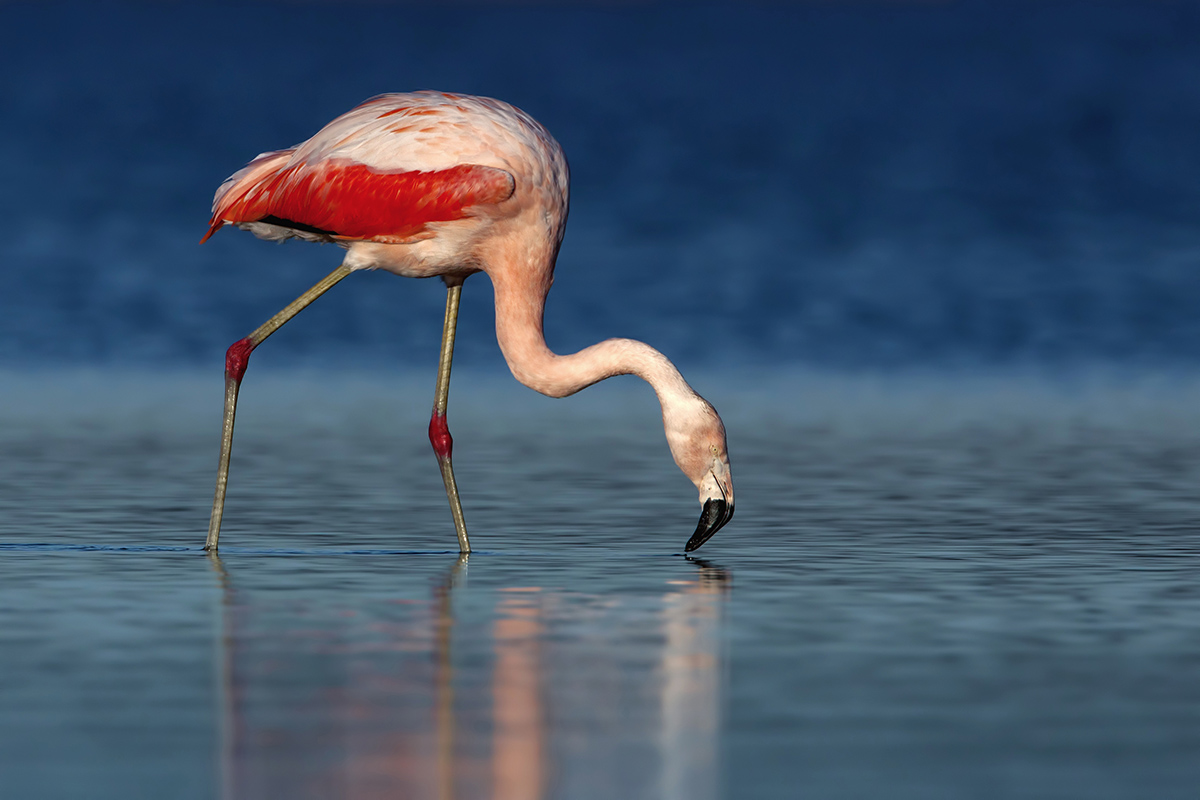
Chilean Flamingo
Renowned for their graceful dance that moves to its own beat, you can also find these pink birds in Patagonia. This species lives mainly in Patagonia’s coastal and freshwater areas, both in Argentina and Chile. They prefer lagoons, estuaries, salt pans, and slow-flowing rivers. The Chilean Flamingo feeds on small crustaceans, algae, and bacteria in the salty lagoons. Its beak is specially adapted to filter food from water and separate nutrients from sediment. During the breeding season, Chilean Flamingos form nesting colonies holding hundreds or thousands of individuals. Pairs perform elaborate courtship displays, including wing spreading and synchronized dances. The female lays a single egg, and both parents take turns incubating it.
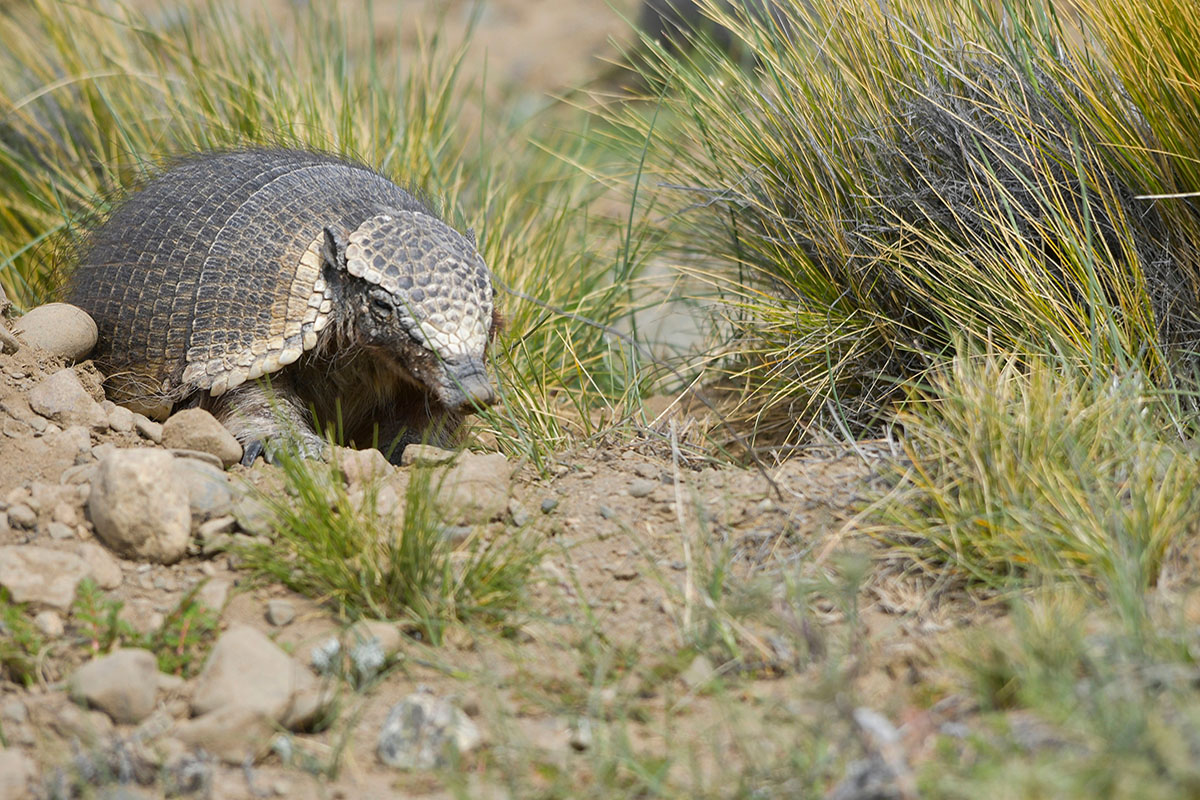
Magellanic Armadillo
The Magellanic Armadillo, found only in Patagonia, has a robust body and a bony shell of plates that provide protection. Its size is relatively small, with a body length between 30 and 40 centimeters. It weighs about 1.5 to 2.5 kilograms. It has a long, pointed snout, and scales cover its tail. It is an omnivorous animal that feeds mainly on insects, such as ants, termites, grubs, and beetles. It also consumes other invertebrates, small vertebrates, and plant matter, such as fruits and roots. It prefers a solitary life moving through its borrow in small paths that it creates with its front legs. It is nocturnal and rests during the day to avoid high temperatures and predators.
Are you a fan of animals? Learn more about the incredible fauna of Torres del Paine in this article and discover other fascinating animals.
